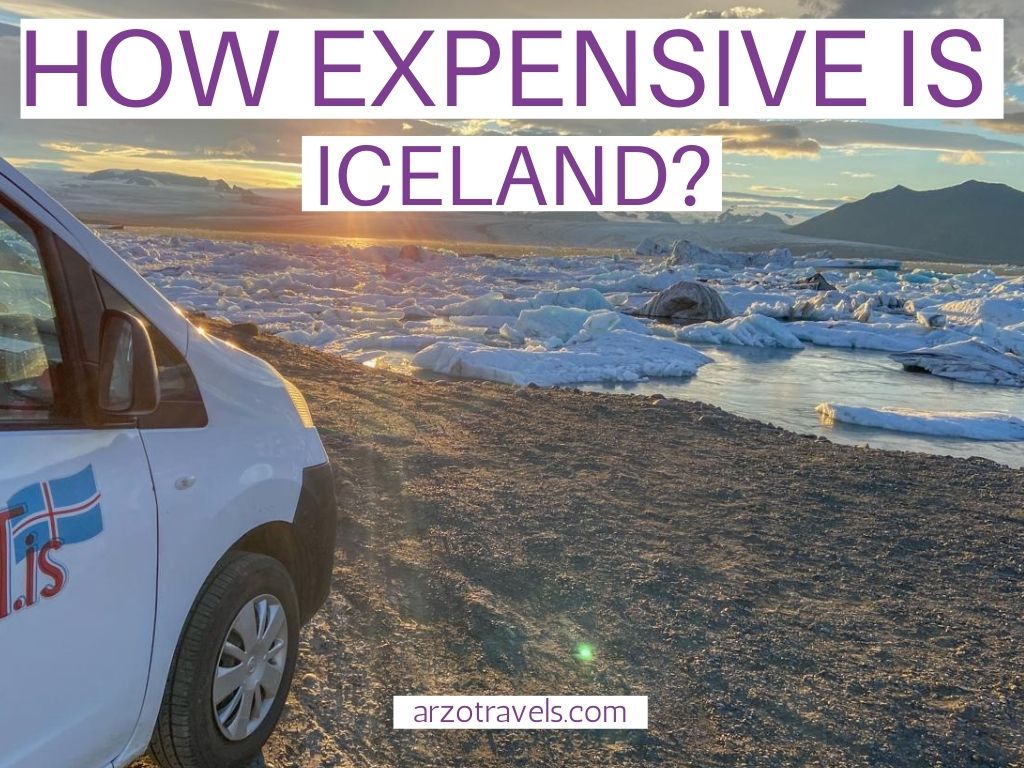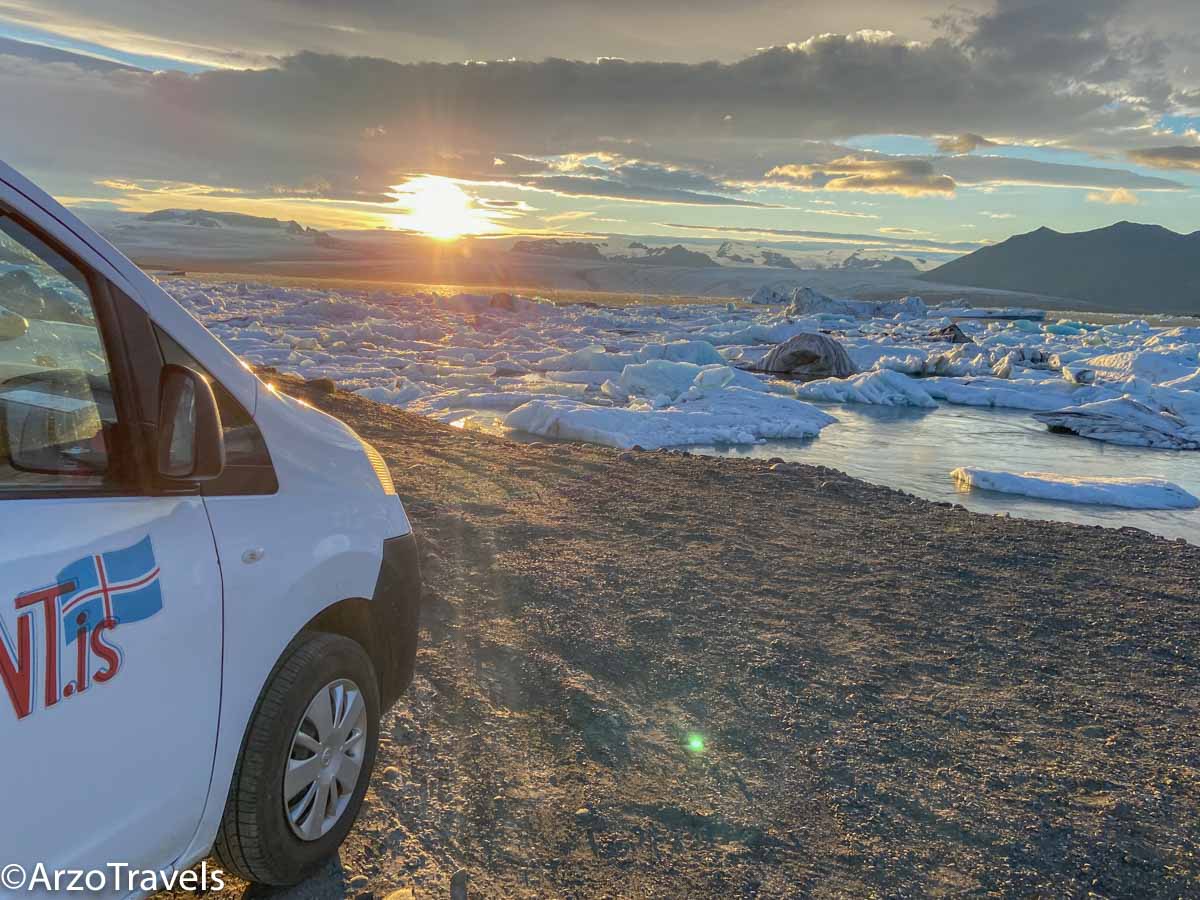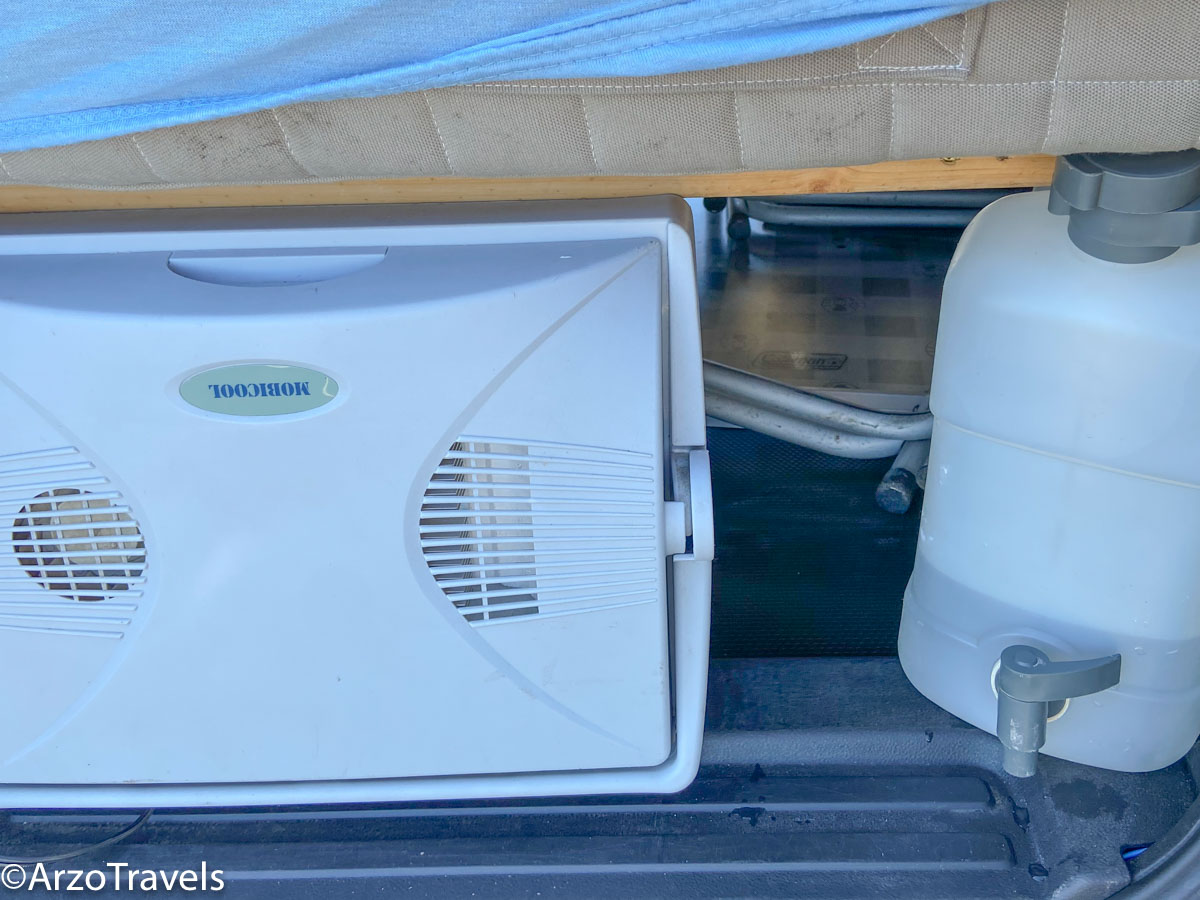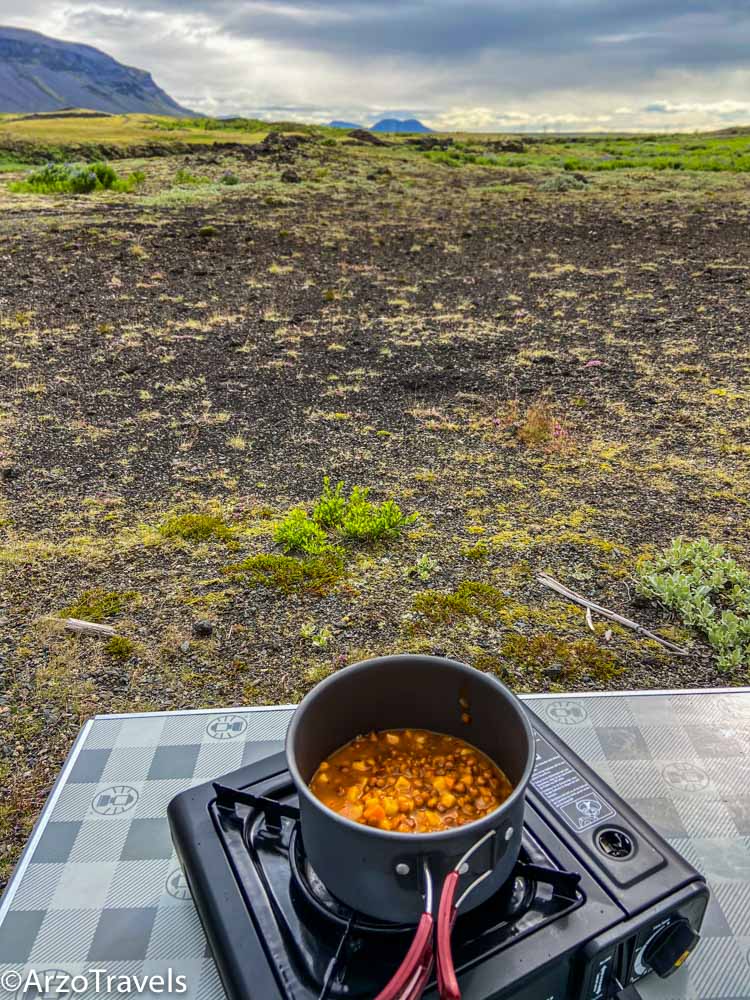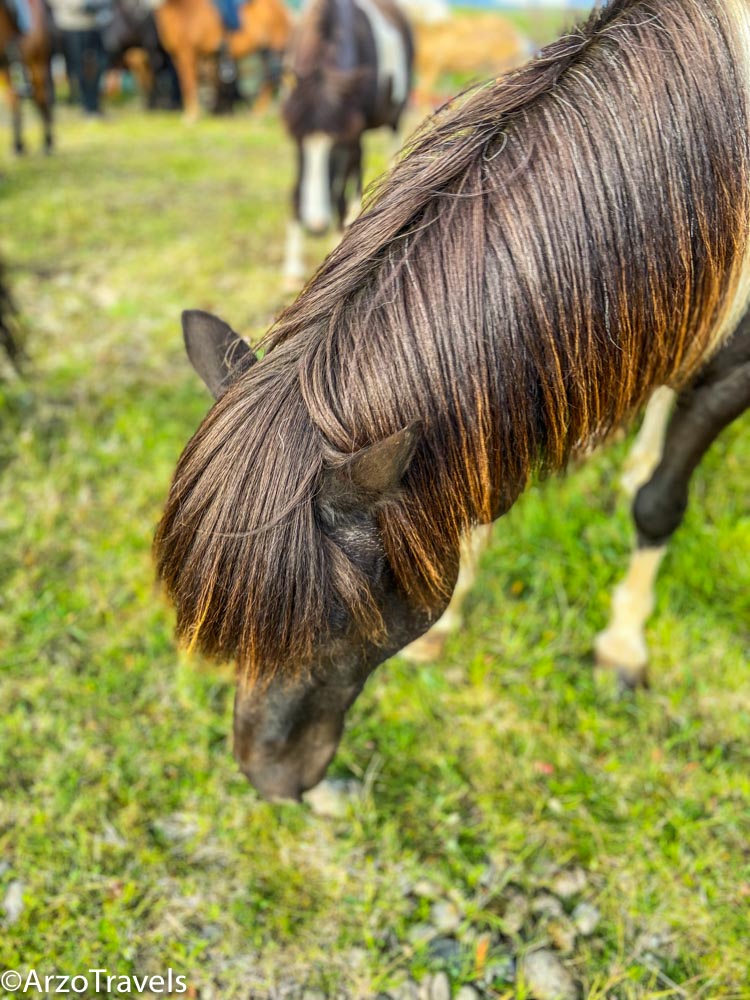COSTS FOR AN ICELAND TRIP
Iceland is known to be an amazing travel destination – but also expensive. It is not the most expensive country I have been to (hello Switzerland, hello Norway), but costs can add up, and the Iceland trip can be pricey.
And since my followers on Instagram kept asking “how expensive is Iceland?“ and “how much money do I need for an Iceland road trip /van trip?” I tracked all my expenses (which, as a travel blogger, I do anyhow) and listed them here for you.
HOW EXPENSIVE IS ICELAND
I visited Iceland twice. In winter (December/January 2020) and in summer (July 2020). In December, I stayed 12 nights. In July, 7 nights.
And I did something for the very first time: I rented a camper van in Iceland and traveled around the country for 8 days. So, in this post, you will find out about how expensive accommodations – and also campsites – are in Iceland, as well as gas prices, food prices (whether you cook for yourself or dine out), and the cost of activities.
So, first I will focus on my 1-week Iceland camper van trip and the costs I incurred, including some activities. But I will also add prices/costs that I had on my first trip – where I did guided tours and stayed in hotels and hostels, and ate out much more.
GENERAL COSTS FOR VISITING ICELAND
So, let‘s start with the costs of one week in Iceland in a camper (or better, 7 nights).
I traveled solo, so I paid all the expenses myself and could not share them with anyone. Also, I did many activities on my first trip, so keep reading until the end to find out more about activity prices in Iceland.
GENERAL MONEY TIPS FOR ICELAND
Currency: Icelandic Krona (ISK) – 1000 ISK is about 6,20€ or $7,30
Card is king – you basically pay with a card everywhere (cash is accepted but not as common as debit/credit card. The only time I was asked to pay cash was at some campsites for showers and for one hot pool.
COST OF RENTING A CAMPER VAN / CAR
Of course, the price of a rental car depends on several factors – size, automatic/manual, 4×4 or regular car, insurance, and a few more.
4-wheel cars are more expensive. You will need one for sure in the winter months when there is a lot of snow and ice. You will also need one for sure if you plan to visit the Highlands (or off-road streets that are not well maintained).
The size of the car also matters and camper and motor homes are more expensive than regular cars.
However, it also depends on whether you choose a manual or automatic car. Manual cars in Europe are quite common and also cheaper. If you have only driven automatic cars, you might struggle with a manual. Iceland – maybe – might not be the best place to try out driving manual cars.
You also need to think about the insurance. Normally, the cars come with a basic insurance that covers theft. Then, you normally have different packages – if you rent a 2-wheel car and drive streets that are only meant for 4-wheel cars, the insurance will not cover at all. So, this is very important to think about beforehand.
Also, if you plan to cross rivers with a car (sounds weird, but it is not so uncommon in the Highlands), you need to make sure the car is suited for it and the insurance is fine with it.
MY CAMPERVAN COSTS
680€ for 8 days.
On my first trip, I only did guided tours, and on my second trip, I rented the smallest camper van I could find for 8 days. I traveled solo, so I did not need a big one, and I am also not used to driving big cars so I went with the smallest one offered.
I chose the company Campervan Iceland – and was only semi-happy with the car. They work with RentIs and I probably would not book with them again but look for a rental company with better cars.
It was an old one (though it was not but it felt like a 15+ year old car that has been used a lot) and had more issues than I have and many smaller things did not work (like charging my electronics via USB and so I had to deal with that), but it got me around the Ring Road safely and that was the most important thing.
I drive manual in Germany, so I rented a car with a stick, which is cheaper than renting an automatic car.
However, I got the highest insurance package, which did cost me a lot extra (about 250€ more for 8 days).
The camper van had the essentials, like a mini gas stove (which did not always work), a small “fridge,“ and one gas bottle that lasted me one week (since my stove didn‘t always work, I did not have to rebuy it, but you might have to pay around 5€ to get another one if you cook a lot). It also includes:
- Unlimited km
- Sleeping room and seats for 2 people
- Double bed (140 x 190 cm or 110 x 190 cm)
- Free chairs & camping table
- Automatic heating system for the sleeping area
- Sleeping bags
- Refrigerator/Cooler
- Kitchenware & Camping Gas
- Radio/CD/MP3/USB
- CDW Insurance and Final cleaning (included)
It did not have any kitchen or toilet/shower and really was the most basic campervan out there.
The camper van plus premium insurance and essential camping equipment (chairs, dishes, sleeping bag, etc) cost me about 680€ for 8 days. With the basic theft insurance, I would have paid only around 440€ or so.
Also, this was during high-season. But also during “Corona high-season” so prices in July might be higher but for the shoulder season that sounds realistic, where prices drop to about 40-50% (for the car only, not for the insurance).
Renting the van was also my highest expense during my campervan road trip.
If you are looking to rent bigger camper vans – that has beds/seats for 3 or more people you will have to pay much more and a fancy Campervan 4×4 VW California does cost about 300€ a day.
GAS PRICES IN ICELAND
180€ for gas
Gas: Gas prices in Iceland change often, similar to other countries. Prices drop and increase on a regular basis. In summer 2020, gas prices all over the world were pretty low compared to the previous years.
In July 2020, one liter of diesel cost around 1.30-1.40€ (for my US readers, that is about $6 per gallon).
Please keep in mind that prices do change quickly, but as a reference value, you can use that.
I drove the whole Ring Road and also did a few detours – about 1400 kilometres – and paid a bit less than 180€ for gas (diesel is slightly cheaper than gas).
Another main expense that most people have is accommodations – and accommodations in Iceland are really expensive.
So, whether you stay in Reykjavik or in more remote areas, do not expect bargains. Also, hostels are quite pricey.
So, if you do not have a campervan/motorhome, this will probably be your main matter of expense.
ACCOMMODATION PRICES IN ICELAND
Around 100€ for campsites
Accommodations in summer (June, and especially July and August) are particularly expensive. And in winter, Christmas and New Years Eve are more expensive. So, if you need to watch your budget, you can save money by avoiding those months.
3-star hotels easily cost up to 100€ during that time – and dorm rooms can cost around 27€ – while 5-star hotels are more than 200€ a night.
Since I stayed at campsites, I did not have to pay much for accommodations, but I spent one night in a hostel because the USB charger in my car did not work and I had to recharge all my electronics.
This cost me about 28€ (a lovely hostel with a great view) and I had the room all to myself by chance even though it was a dorm. However, normally, a dorm with 3-6 people cost that much
Other than that, I stayed in camping sites and I paid around 10-12€ per night (one person, no extra fee for the campervan/tent).
Depending on where you stay, it may include warm water/shower – some charge an additional 1-2€ for showers, but I never had to pay extra.
In Reykjavik, I paid more because it was a more luxurious campsite that costs about 15€.
But 10€ for camping is probably the cheapest accommodation option you will have and if you stay for more than 12 days in Iceland (or travel with more than travel partner), you might want to check out the Camping Card which might save you money.
FOOD PRICES IN ICELAND
Food (self-prepared):
60€ for food and drinks
One main expense will probably be food – but it doesn’t have to be. I eat mostly plant-based (meaning I avoid animal products but still, very rarely consume diary or eggs). I do not do it to save money but it actually saves me tons of money. Plant-based food is very cheap and so eating in Iceland was not a big issue for me.
I tried to cook every day but my cooker did not work 100% after a few days, so I ate food which was easy to prepare.
So, I had pasta and tomato sauce and some veggies several times. I also bought rice, but did not eat it as the stove did not work after a few days. And I had chickpeas in a can with veggies. I bought toast and made sandwiches with hummus and veggies, or just had toast with plain Nutella.
I also got an avocado once and had it with toast and salad (I bought a lot of local cucumbers and tomatoes, but also canned corn and chickpeas or beans).
For breakfast I often had oat milk with cereal and a lot of chocolate and chips for snacks.
The bananas I got once did not taste great, so I did not buy a lot of fruit on this trip, which are quite pricey since there is no real local fruits in Iceland.
I mostly bought my groceries at Bonus, which is also one of the cheapest grocery stores in the country.
For 8 days, I paid around 60€ for groceries. It was not the healthiest diet I have had, but also not very unhealthy, so if you eat healthier with even more veggies and fruits and legumes, you might pay a bit more (but not much).
If you buy meat or meat substitutes (which Iceland has plenty of), you will need to pay much more since meat is expensive in Iceland.
Water is free – and since I mostly drank water I did not have to pay. Tap water is fine but you often can get your water from rivers/waterfalls as well.
If you enjoy alcoholic drinks you will have to pay more – while prices for coffee is reasonable, alcoholic drinks are not the best drink to go for if you are on a budget.
Dining out:
20€ for dining out
I only had lunch/dinner out once on my second trip.
At Husafell Bistro, I had a vegan burger with fries for about 20€. This was the only time I sat down and ordered food. Since it was not that great, I did not feel tempted to eat out more.
However, I dined out more often on my first trip and think that 20-30€ is pretty standard for a (vegan) burger.
Though I do not eat meat/seafood, I checked out prices and I believe that this is what you typically have to pay for one meal. In a better restaurant (though not very fancy), you might pay around 30-35€ for a meal. Steaks or fancy seafood will costs you more in many restaurants.
Cheaper foods are hot dogs or soups (for less than 10-15€), and if you have take-away burgers at gas stations, you will pay less than 15€ for a burger with fries.
So, for my camper van trip I just paid around 20€ for eating out.
On my first trip, I had either lunch or dinner in a restaurant each day, and had breakfast and one meal in my hotel/hostel. So, I paid around 25-30€ a day for eating out and maybe 5€ for preparing my own food.
Coffee/ Snacks:
25€ for snacks
I had coffee every other day, but also bought some snacks like ice cream and paid around 3- 3.50€ for one coffee/cappuchino.
In total, I paid about 20-25€ for snacks and coffee on my second trip.
In total, I paid around 100€ for food for 8 days.
ACTIVITY PRICES IN ICELAND
27€ for activities
Many sights in Iceland are actually free. You can visit most natural landmarks and won’t have to pay a dime for anything, which makes visiting these stunning places even more fun.
Interestingly, often these attractions are on private land, but they are open to the public – some ask for a donation to maintain the place and some charge money. But most top outdoor attractions are free to see/visit.
Waterfalls, hiking in natural parks, visiting outdoor attractions like the Red Chair, and even many hot pools are free.
Commercial places like the Blue Lagoon, of course, do cost money (and not a little). If you road trip though, you will not have to pay a fortune on paid activities.
I did not do many paid activities this time, as I did many main “expensive activities“ on my first trip.
So, I paid 10€ for a hot pool, 17€ for the Myvatn Bath (which is normally twice as expensive, but I guess the prices dropped because of Covid-19), and I just paid 27€ for attractions on my second trip.
Here are more prices for activities I did on my first trip:
Blue Lagoon – around 80€ (there was a slightly cheaper option, but I chose the “premium“ option)
Secret Lagoon – around 17€
Glacier Tours (depending on where you are picked up and which tour you choose) – around 100€
Snow mobile tour – around 200€
Northern Lights Tours – around 40-50€
FlyOver Iceland – around 27€
Perlan – Wonders of Iceland & Áróra – about 27€
Hallgrimskirkja church tower – about 5.5€
Horseback riding (I did not do it myself) – 70€
Whale Watching – 80€
Find out more about things to do in Iceland by clicking here.
So, if you want to spend a fortune on activities, you easily can – especially if you do private guided tours and want to do whatever Iceland has to offer.
But even Iceland on a budget is totally possible. You do not need to spend a lot on activities to have a great time.
OTHER COSTS IN ICELAND
Here are some other costs had on one of my two trips or you could have.
Public Transportation
Bus tickets: Unfortunately, public transportation in Iceland is not fantastic. Getting to main attractions only by bus is very hard (I do not want to say impossible, though it probably is). You will have to rent a car or pay for guided tours, but within Reykjavik, you can get around by bus.
You can also take several buses to Northern Iceland or other areas. They are cheaper than guided tours, though at the end, you will have to book tours again or rent a car.
Within Reykjavik I used public transportation and I paid around 3€ for one ticket. Bus tickets from the airport to the city center of Reykjavik costs about around 13€ (keep in mind, that the international airport is the Keflavík Airport and that they dont run that often so the – more expensive – airport shuttle costs around 30€ one way (thus, I highly recommend renting your car from the airport).
More expenses for my Iceland road trip:
There is a toll fee for using the Hvalfjarðargönginn Tunnel (Northern Iceland), which is about 10€.
I did not pay any money for parking, but there are some spots where you have to pay a bit (most parking is free though).
Water is free in Iceland, so never spend money on it and refill when you see streams, etc. (You get tap water if you eat out.)
I had to pay about 56€ for a Coronavirus test upon arrival – the test is no longer compulsory for Germans, but you might still have to pay for it.
TOTAL EXPENSIVES FOR ONE WEEK IN ICELAND – CAMPERVAN TRIP
So, how much did I pay for one week in Iceland in a camper van?
In total, I paid around 1100€ for my one week road trip in Iceland (no flight tickets included, but the test is included). Most of it was for my rental car – if you have a campervan yourself and bring it over (and pay for the ferries only) you could save tons of money. However, it was also the smallest camper van they had (and thus the cheapest). If you want something more comfortable or bigger, expect to pay a few hundred € more.
Since I did a couple of main attractions during my first trip, it saved me money. I guess if it had been my first trip, I would have ended up paying closer to 1500€ or so.
But if you split rental and gas costs with a travel partner, you can probably do a similarly fun and amazing trip like I had for 600-1000€.
Surely, it was not a luxurious trip and I had more luxury for less money in other destinations, but 1100€ for eight days doesn’t sound too bad to me. I did not feel I missed out on anything or that I sacrificed, but I also did not feel that I indulged. I got what I wanted and that was a fun trip for me.
If you really wanted to, you could probably travel Iceland for 900€ solo (assuming you do not take the premium package with your rental, budget even stricter with food and activities, and do all the fun free things in the country).
With 1200-1500€, you would be doing quite well and could eat out a bit more often than I did. And with 1500-1800€, I probably would have had an even more comfortable trip (especially dining out), but I did not feel it was needed.
If you stay in hostels or even good hotels, this drastically changes the total and you would have to add at least 50-120€ per night (especially if you travel solo). Check out my accommodation guide for Iceland.
Iceland surely is not the most budget-friendly destination, but it is still possible to have an amazing time without breaking the bank, as my list proves.
